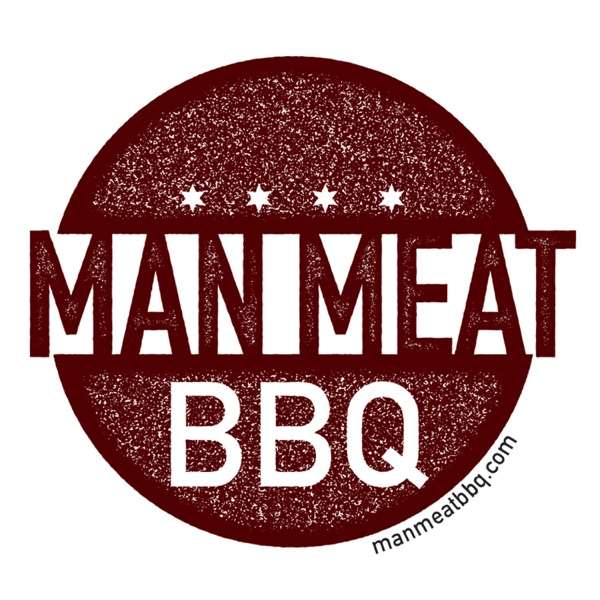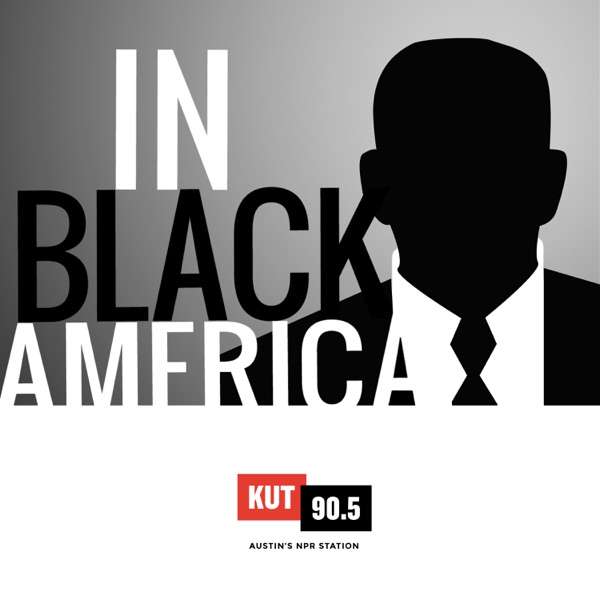Elisabeth Stewart, MSN, MSNA, CRNA focused her Master of Science in Nurse Anesthesia project on the pharmacology of Toradol (ketorolac) and she’s here today to tell us all about it.
Elisabeth hails from Wisconsin, holds a BS in Mathematics with a pre-med concentration and engaged in HeLa cell cancer research prior to going to nursing school. She received a Master of Science in Nursing degree at the University of Wisconsin – Milwaukee, where she worked in a transplant ICU while completing her Clinical Nurse Leader degree and certification. Elisabeth followed that with her Master of Nurse Anesthesia degree at the University of New England and received the UNE Outstanding Student Award for her class. Her primary clinical site in training was Maine Medical Center in Portland, Maine. When Elisabeth showed up for day one of clinical, I was serving as the SRNA Clinical Coordinator and by the time she was completing her training, I was a year into my new role as Chief CRNA at Maine Medical Center. Elisabeth was one of the best SRNAs we’ve had roll through Maine Med in years and brought a degree of professionalism, conscientiousness and excellence in clinical care that inspired confidence in her practice and reallllly made me try to recruit her as a clinical staff. As it is, she’s chosen to start her career closer to family in Massachusetts and I wish her the absolute best moving forward.
I think you’re really going to enjoy hearing Elisabeth walk through the pharmacokinetics and pharmacodynamics of ketorolac with specific focus on the risk (or lack thereof) of bleeding with the use of ketorolac. Elisabeth focused primarily on the risk of bleeding in adult breast surgery patients. She reviewed 27 research articles to boil down what the literature says about the role of ketorolac in perioperative bleeding risk in breast surgery patients. Her full write up is attached in the show notes to this episode. And with that, let’s get to the show!
Careers at Maine Medical Center:
If you’re interested in joining our team at Maine Medical Center, reach out to me at Jon.Lowrance@mainehealth.org or apply for one of our CRNA positions in Portland, Maine at https://www.mainehealth.org/careers-job-opportunities
References
•Afonso, A., Oskar, S., Tan, K.S., Disa, J. J., Mehrara, B. J., Ceyhan, J., & Dayan, J. H. (2017). Is enhanced recovery the new standard of care in microsurgical breast reconstruction? Plastic and Reconstructive Surgery,139(5), 1053-61. https://doi.org/10.1097/PRS.0000000000003235.
•Barkho, J. O., Li, Y. K., Duku, E., & Thoma, A. (2018). Ketorolac may increase hematoma risk in reduction mammaplasty: A case-control study. PRS Global Open, 6, 1-5. https://doi.org/10.1097/GOX.0000000000001699
•Blomqvist, L, Sellman, G., & Strömbeck, J. O. (1996). NSAID as pre- and postoperative medication —a potential risk for bleeding complications in reduction mammaplasty. European Journal of Plastic Surgery 19, 26–8.
•Bongiovanni, T., Lancaster, E., Ledesma, Y., Whitaker, E., Steinman, M. A., Allen, I. E., Auerbach, A., & Wick, L. (2021). A systematic review and meta-analysis of the association between non-steroidal anti-inflammatory drugs and surgical bleeding in the perioperative period. Journal of the American College of Surgeons, 232(5), 765-90. https://doi.org/10.1016/j.jamcollsurg.2021.01.005.
•Cawthorn, T. R., Phelan, R., Davidson, J. S., & Turner, K. E. (2012). Retrospective analysis of perioperative ketorolac and postoperative bleeding in reduction mammoplasty. Canadian Journal of Anaesthesia, 59(5), 466-72. https://doi.org/10.1007/s12630-012-9682-z.
•Conrad, K. A., Fagan, T. C., Mackie, M. J., & Mayshar, P. V. (1988). Effects of ketorolac tromethamine on hemostasis in volunteers. Clinical Pharmacology & Therapeutics, 43(5), 542-546.
•Corsini, E. M., Zhou, N., Antonoff, M. B., Mehran, R. J., Rice, D. C., Roth, J. A., Sepesi, B., Swisher, S. G., Vaporciyan, A. A., Walsh, G. L., & Hofstetter, W. L. (2021). Postoperative bleeding and acute kidney injury in esophageal cancer patients receiving ketorolac. Annals of Thoracic Surgery, 111, 1111-7. https://doi.org/10.1016/j.athoracsur.2020.07.028.
•Dowbak G. (1992). Personal experiences with Toradol. Plastic and Reconstructive Surgery, 89(6), 1183. https://doi.org/10.1097/00006534-199206000-00051.
•Firriolo, J. M., Nuzzi, L. C., Schmidtberg, L. C., & Labow, B. I. (2018). Perioperative ketorolac use and postoperative hematoma formation in reduction mammoplasty: A single-surgeon experience of 500 consecutive cases. Breast, 142(5), 632e-8e. https://doi.org/10.1097/PRS.0000000000004828.
•Garcha, I. S., & Bostwick, J. (1991). Postoperative hematomas associated with Toradol. Plastic and Reconstructive Surgery, 88(5), 919-20. https://doi.org/10.1097/00006534-199111000-00050.
•Gobble, R. M., Hoang, H. L., Kachniarz, B., & Orgill, D. P. (2014). Ketorolac does not increase perioperative bleeding: A meta-analysis of randomized controlled trials. Plastic and Reconstructive Surgery, 133(3), 741-55. https://doi.org/10.1097/01.prs.0000438459.60474.b5
•Gupta, A. K., & Parker, B. M. (2020). Bleeding after a single dose of ketorolac in a postoperative patient. Cureus, 12(6), 1-6. https://doi.org/10.7759/cureus.8919
•Klifto, K. M., Elhelali, A., Payne, R. M., Cooney, C. M., Manahan, M. A., & Rosson, G. D. (2021). Perioperative systemic nonsteroidal anti-inflammatory drugs (NSAIDs) in women undergoing breast surgery. Cochrane Database of Systematic Reviews 2021(11), 1-3. https://doi.org/10.1002/14651858.CD013290.pub2.
•Lexicomp. (n.d.). Ketorolac: Drug information. UpToDate. Retrieved September 14, 2022, from https://online-lexi-com.une.idm.oclc.org/lco/action/doc/retrieve/docid/patch_f/1797828?cesid=6fX6XGxK6EG&searchUrl=%2Flco%2Faction%2Fsearch%3Fq%3Dketorolac%26t%3Dname%26acs%3Dtrue%26acq%3Dketorolac#fbnlist
•Macario, A., & Lipman, A. G. (2001). Ketorolac in the era of cyclo-oxygenase-2 selective nonsteroidal anti-inflammatory drugs: A systematic review of efficacy, side effects, and regulatory issues. Pain Medicine, 2(4), 336-51. https://doi.org/10.1046/j.1526-4637.2001.01043.x.
•Majumdar, J. R., Assel, M. J., Lang, S. A., Vickers, A. J., & Afonso, A. M. (2022) Implementation of an enhanced recovery protocol in patients undergoing mastectomies for breast cancer: an interrupted time-series design. Asia-Pacific Journal of Oncology Nursing, 9, 1-5. https://doi.org/10.1016/j.apjon.2022.02.009
•Martinez, L., Ekman, E., & Nakhla, N. (2019). Perioperative opioid-sparing strategies: Utility of conventional NSAIDs in adults. Clinical Therapeutics, 14(12), 2612-28. https://doi.org/10.1016/j.clinthera.2019.10.002
•Maslin, B., Lipana, L., Roth, B., Kodumudi, G., & Vadivelu, N. (2017). Safety considerations in the use of ketorolac for postoperative pain. Current Drug Safety, 12, 67-73. https://doi.org/10.2174/1574886311666160719154420
•McCormick, P. J., Assel, M., Van Zee, K. J., Vickers, A. J., Nelson, J. A., Morrow, M., Tokita, H. K., Simon, B. A., & Twersky, R. S. (2021). Intraoperative ketorolac is associated with risk of reoperation after mastectomy: A single-center examination. Annals of Surgical Oncology, 28(9), 5134-40. https://doi.org/10.1245/s10434-021-09722-4.
•McNicol, E. D., Ferguson, M. C, & Schumann, R. (2021). Single-dose intravenous ketorolac for acute postoperative pain in adults. Cochrane Database of Systematic Reviews, 5, 1-91. https://doi.org/10.1002/14651858.CD013263.pub2
•Mikhaylov, Y., Weinstein, B., Schrank, T. P., Swartz, J. D., Ulm, J. P., Armstrong, M. B., & Delaney, K. O. (2018). Ketorolac and hematoma incidence in postmastectomy implant-based breast reduction. Annals of Plastic Surgery, 80(5), 472-474. https://doi.org/10.1097/SAP.0000000000001409
•Motov, S., Yasavolian, M., Likourezos, A., Pushkar, I., Hossain, R., Drapkin, J., … & Fromm, C. (2017). Comparison of intravenous ketorolac at three single-dose regimens for treating acute pain in the emergency department: a randomized controlled trial. Annals of emergency medicine, 70(2), 177-184.
•Nguyen, B. N., Barta, R. J., Stewart, C. E., & Heinrich, C. A. (2018). Toradol following breast surgery: Is there an increased risk of hematoma? Plastic and Reconstructive Surgery Journal, 141(6), 814e-7e. https://doi.org/10.1097/PRS.0000000000004361
•O’Neill, R. C., Hayes, K. D., & Davidson, S. P. (2019). Safety of postoperative opioid alternatives in plastic surgery: A systematic review. Plastic and Reconstructive Surgery Journal, 144(4). 991-9. https://doi.org/10.1097/PRS.0000000000006074
•Rojas, K. E., Fortes, T. A., Flom, P., Manasseh, D. M., Andaz, C., & Borgen, P. (2019). Intraoperative ketorolac use does not increase the risk of bleeding in breast surgery. Annals of Surgical Oncology, 26, 3368-73. https://doi.org/10.1245/s10434-019-07557-8
•Sharma, S., Chang, D.W., Koutz, C., Evans, G. R., Robb, G. L., Langstein, H. N., & Kroll, S. S. (2001). Incidence of hematoma associated with ketorolac after TRAM flap breast reconstruction. Plastic and Reconstructive Surgery, 107(2), 352-5. https://doi.org/ 10.1097/00006534-200102000-00009.
•Singer, A. J., Mynster, C. J., & McMahon, B. J. (2003). The effect of IM ketorolac tromethamine on bleeding time: A prospective, interventional, controlled study. American Journal of Emergency Medicine, 21(5), 441-3. https://doi.org/10.1016/S0735-6757(03)00100-1
•Stephens, D. M., Richards, B. G., Schleicher, W. F., Zins, J. E., Langstein, H. N. (2015). Is ketorolac safe to use in plastic surgery? A critical review. Aesthetic Surgery Journal, 35(4), 462-6. https://doi.org/10.1093/asj/sjv005
•Strom, B. L., Berlin, J. A., Kinman, J. L., Spitz, P. W., Hennessy, S., Feldman, H., Kimmel, S., & Carson, J. L. (1996). Parenteral ketorolac and risk of gastrointestinal and operative site bleeding: A postmarketing surveillance study. JAMA, 275(5), 376–82.
•Tan, P., Martin, M., Shank, N., Myers, L., Wolfe, E., Lindsey, J., & Metzinger, S. (2017). A comparison of four analgesic regimens for acute postoperative pain control in breast augmentation patients. Annals of Plastic Surgery, 78(6), S299-304. https://doi.org/10.1097/SAP.0000000000001132.
•Walker, N. J., Jones, V. M., Kratky, L., Chen, H., & Runyan, C. M. (2019). Hematoma risks of nonsteroidal anti-inflammatory drugs used in plastic surgery procedures: A systematic review and meta-analysis. Annals of Plastic Surgery, 82(5), S437-45. https://doi.org/10.1097/SAP.0000000000001898
•Wick, E., Grant, M. C., Wu, C. L. (2017). Postoperative multimodal analgesia pain management with nonopioid analgesics and techniques: A review. Journal of the American Medical Association Surgery, 152(7), 691-7. https://doi.org/10.1001/jamasurg.2017.0898

 Our TOPPODCAST Picks
Our TOPPODCAST Picks  Stay Connected
Stay Connected








 We’re still here. This is the first episode of 2023 and the first episode on Anesthesia Guidebook since October – October!
We’re still here. This is the first episode of 2023 and the first episode on Anesthesia Guidebook since October – October! 





































